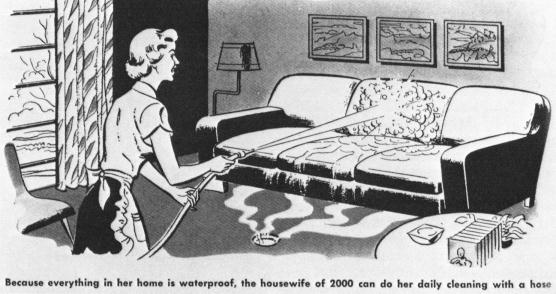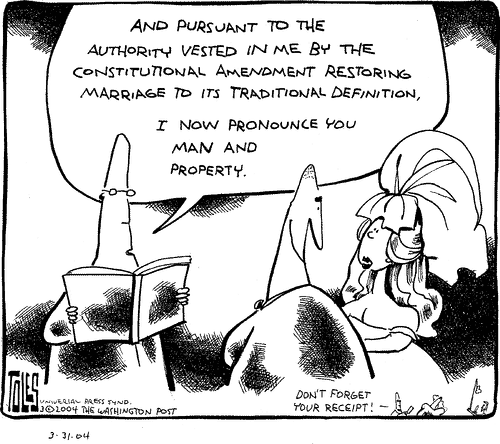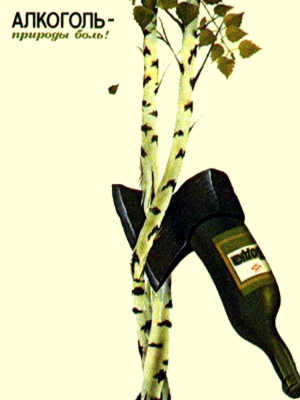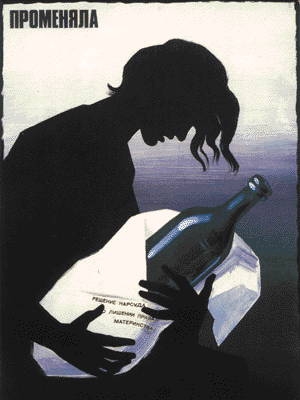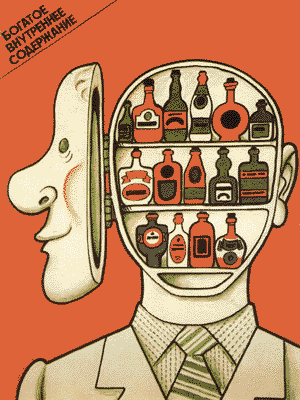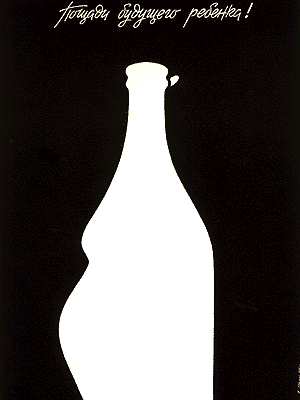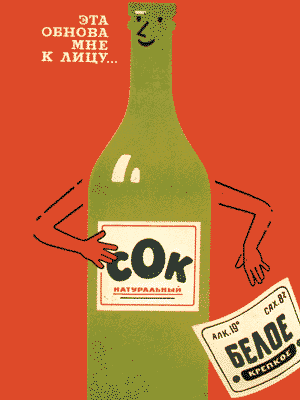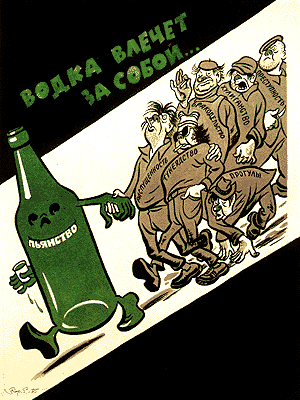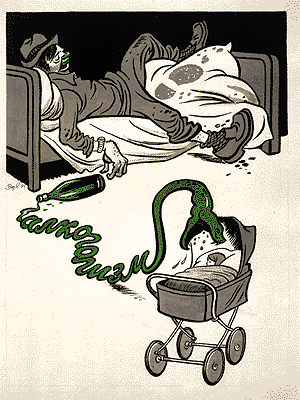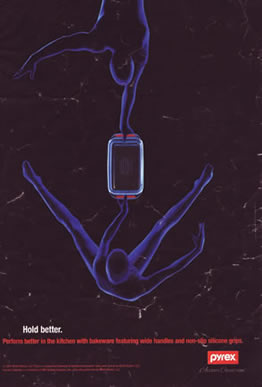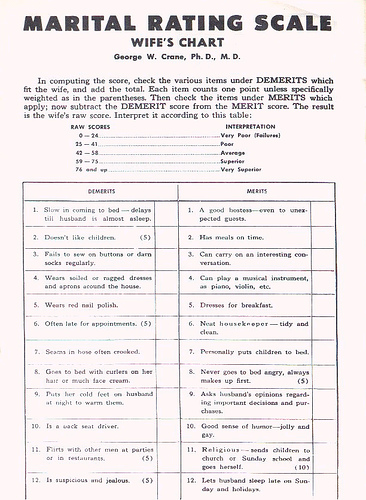At the Los Angeles Times, found via Scatterplot.
marriage/family
“Because everything in her home is waterproof, the housewife of 2000 can do her daily cleaning with a hose.”
If only. I have started vacuuming my dogs, which seems more efficient than letting them shed and then vacuuming their hair off the carpet, but that’s a long way from just being able to hose the house down every day.
This image, found here, is a good illustration of visions of the future and the intense belief in science and technology to completely change daily life (except who does housework) that was so common in the 1950s.
It could also be useful for a discussion of how new household appliances and technologies actually changed women’s lives. In some cases, new electrical appliances clearly reduced women’s domestic workload. My great-grandma had a lifelong devotion to Franklin D. Roosevelt because his New Deal rural electrification project eventually made it possible for her to get an electric washer. She had 7 kids and swore to me multiple times that the electric washing machine was the single greatest thing that ever happened to women (birth control being a close second). On the other hand, as more household appliances became available, our standards of cleanliness increased, so in many cases women ended up doing more housework in an effort to meet the more stringent cleanliness (and to use their electric vacuum to vacuum a peacock-fan-shaped pattern into the carpet, among other useful skills some home economics courses imparted).
Thanks to Ben G. for sending this along!
A student pointed me to bharatmatrimony.com, a matchmaking website targeting the general Indian sub-continent:

You can choose to search a variety of more specific groups (Hindi, Punjabi, Tamil, etc.). Among other search criteria, you can specify caste and sub-caste.
I did a quick search (I put in “any” for caste) and found that the profiles are publicly available (presumably you only have to pay if you actually want to contact them), and include such information as complexion (one profile said “wheatish”), blood type (??), eating habits (vegetarian or not), horoscope and whether or not the person requires a good horoscope match, the person’s caste and sub-caste, annual income, and their preferences in a partner (they can state a caste and first-language preference but not a complexion preference, from what I can tell).
The website might be useful for any number of discussions–about technology and the increasing global reach of the internet, of modern methods of dating, about what type of information we might think is important at first glance about a person (although in the U.S. I bet many people would say asking about someone’s complexion is inappropriate or racist, I presume we have things on our dating sites that would seem rude in India; also, I’d argue American users of dating website don’t openly ask about complexion but can get that information from photos and so may be judging potential partners on it anyway). This could also bring up an interesting discussion of language–I suspect many students would be horrified at the idea of a “matchmaker,” which implies arranged marriages to some degree, but a “dating service” seems different (even though eharmony and other sites call potential partners “matches”).
The same student also uncovered these anti-dowry posters:

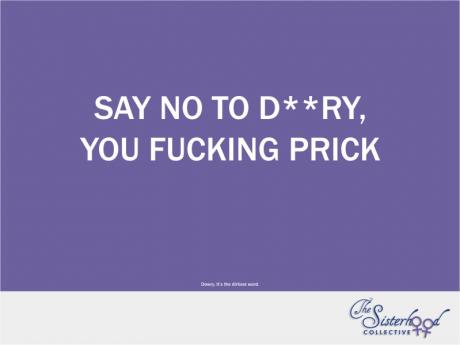

They can be found here. I have tried to find a website for The Sisterhood Collective or the ad agency that supposedly made these posters but have not be able to, so I do not have definitive proof they are real (I have no reason to say they aren’t, only that I’m usually cautious of things that supposedly were displayed in other countries that seem a little too funny/horrific to be true, so I always try to do a little digging if I can. Snopes.com didn’t have anything on it.
One thing that I thought was interesting about the anti-dowry posters was that when I first saw them, the language (“you fucking prick”) made me assume they were directed at men, although when I looked at them again I realized there was no reason they couldn’t be directed at women. If they were meant to target a male audience, it could lead to an interesting discussion of the implication that only men are engaged in patriarchal oppression, ignoring the role that older women (particularly potential mothers-in-law) play in reinforcing dowry and the devaluation of women.
Finally, here’s the cover (found here) of the very first issue of Vogue India, from October, 2007:
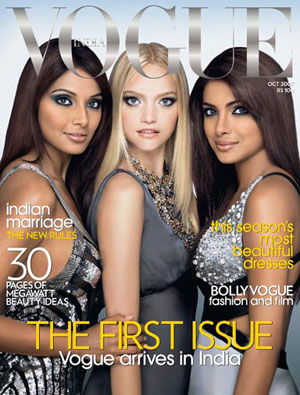
Here we see that the image of beauty provided by the magazine to the millions of women in India includes a narrow set of features: light skin, straight hair, stereotypically “European” facial features–and, of course, very, very thin bodies. Compare to this Indian ad for skin-lightening cream for a discussion of standards of beauty and how a generalized “White” ideal of beauty has been increasingly globalized.
Thanks, Kellie G.!

Watch how this 60 Minutes clip from August 2006 manages to completely confuse three very different things: sex identity (believing you are biologically female or male), gendered behavior (conforming to cultural rules about girls/women and boys/men are supposed to do and like), and sexual orientation (which sex you are attracted to sexually). For examples, you know your boy is going to grow up wanting to have sex with men because he likes to “help out in the kitchen” or thinks he’s a girl. These are all very different things. It also includes some wretched study design.
Part I
[youtube]https://www.youtube.com/watch?v=IoZoRbP-0WM[/youtube]
Part II
[youtube]https://www.youtube.com/watch?v=WTLAof9oXCI[/youtube]
By the way, funny story: When my nephew was about 2 years old he loved brooms and vacuums. My parents told me that it was because he liked “tools.”
Thanks to Joseph DeM. for the tip!
Lisa Wade, PhD is an Associate Professor at Tulane University. She is the author of American Hookup, a book about college sexual culture; a textbook about gender; and a forthcoming introductory text: Terrible Magnificent Sociology. You can follow her on Twitter and Instagram.
I’m not exactly sure how these images could be used in the classroom (to talk about state promotion of the family? the social ills of alcohol? gendering alcoholism?), but I think they’re fascinating. I found them at the Museum of Anti-Alcohol Posters.
“Cause- drunkenness”
“No mercy for hooligans!”
“Alcohol: Pain of nature”
“Bartered”
“Rich inner substance”
“Have mercy on your future child”
“This new dress becomes me well”
“Harmful to health, family and descendants”
“Vodka brings with it”
“alcoholism”
The University of Michigan Sexual Assault Prevention and Awareness Center gives a thumbs up to these ads for Pyrex kitchen cookware for using androgynous figures instead of women. Doing so suggests that people use kitchens, not just women. Contrast it to, well, as far as I can remember, just about every other ad for every other kitchen product that I’ve ever seen (for examples, see here, here, here, here, and here).
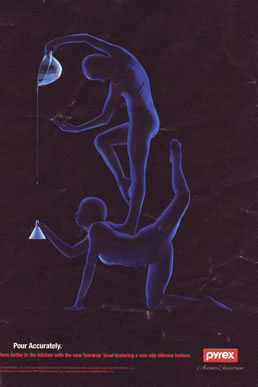
Thanks to Laura L. for the tip!
Laura R. sent us this 1939 test for husbands and wives, developed by an M.D./Ph.D. in psychology, designed to determine how well each is performing in his or her gendered role with marriage. For proper behavior the spouse earns merits, for improper, demerits. Below is the front page and the first page of the test for both men and women. Click here to see the whole thing (via boingboing).
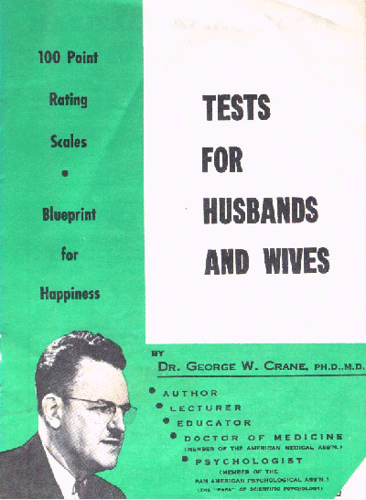
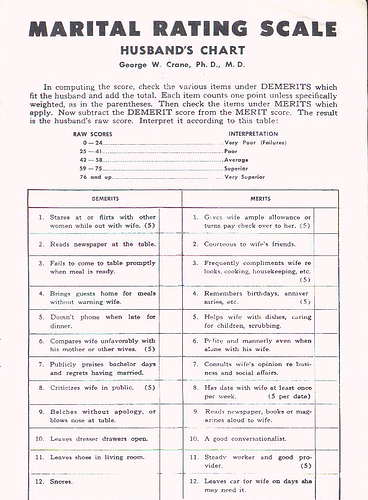
Thanks Laura!
Lisa Wade, PhD is an Associate Professor at Tulane University. She is the author of American Hookup, a book about college sexual culture; a textbook about gender; and a forthcoming introductory text: Terrible Magnificent Sociology. You can follow her on Twitter and Instagram.
“Because everything in her home is waterproof, the housewife of 2000 can do her daily cleaning with a hose.”
If only. I have started vacuuming my dogs, which seems more efficient than letting them shed and then vacuuming their hair off the carpet, but that’s a long way from just being able to hose the house down every day.
This image, found here, is a good illustration of visions of the future and the intense belief in science and technology to completely change daily life (except who does housework) that was so common in the 1950s.
It could also be useful for a discussion of how new household appliances and technologies actually changed women’s lives. In some cases, new electrical appliances clearly reduced women’s domestic workload. My great-grandma had a lifelong devotion to Franklin D. Roosevelt because his New Deal rural electrification project eventually made it possible for her to get an electric washer. She had 7 kids and swore to me multiple times that the electric washing machine was the single greatest thing that ever happened to women (birth control being a close second). On the other hand, as more household appliances became available, our standards of cleanliness increased, so in many cases women ended up doing more housework in an effort to meet the more stringent cleanliness (and to use their electric vacuum to vacuum a peacock-fan-shaped pattern into the carpet, among other useful skills some home economics courses imparted).
Thanks to Ben G. for sending this along!
A student pointed me to bharatmatrimony.com, a matchmaking website targeting the general Indian sub-continent:

You can choose to search a variety of more specific groups (Hindi, Punjabi, Tamil, etc.). Among other search criteria, you can specify caste and sub-caste.
I did a quick search (I put in “any” for caste) and found that the profiles are publicly available (presumably you only have to pay if you actually want to contact them), and include such information as complexion (one profile said “wheatish”), blood type (??), eating habits (vegetarian or not), horoscope and whether or not the person requires a good horoscope match, the person’s caste and sub-caste, annual income, and their preferences in a partner (they can state a caste and first-language preference but not a complexion preference, from what I can tell).
The website might be useful for any number of discussions–about technology and the increasing global reach of the internet, of modern methods of dating, about what type of information we might think is important at first glance about a person (although in the U.S. I bet many people would say asking about someone’s complexion is inappropriate or racist, I presume we have things on our dating sites that would seem rude in India; also, I’d argue American users of dating website don’t openly ask about complexion but can get that information from photos and so may be judging potential partners on it anyway). This could also bring up an interesting discussion of language–I suspect many students would be horrified at the idea of a “matchmaker,” which implies arranged marriages to some degree, but a “dating service” seems different (even though eharmony and other sites call potential partners “matches”).
The same student also uncovered these anti-dowry posters:



They can be found here. I have tried to find a website for The Sisterhood Collective or the ad agency that supposedly made these posters but have not be able to, so I do not have definitive proof they are real (I have no reason to say they aren’t, only that I’m usually cautious of things that supposedly were displayed in other countries that seem a little too funny/horrific to be true, so I always try to do a little digging if I can. Snopes.com didn’t have anything on it.
One thing that I thought was interesting about the anti-dowry posters was that when I first saw them, the language (“you fucking prick”) made me assume they were directed at men, although when I looked at them again I realized there was no reason they couldn’t be directed at women. If they were meant to target a male audience, it could lead to an interesting discussion of the implication that only men are engaged in patriarchal oppression, ignoring the role that older women (particularly potential mothers-in-law) play in reinforcing dowry and the devaluation of women.
Finally, here’s the cover (found here) of the very first issue of Vogue India, from October, 2007:

Here we see that the image of beauty provided by the magazine to the millions of women in India includes a narrow set of features: light skin, straight hair, stereotypically “European” facial features–and, of course, very, very thin bodies. Compare to this Indian ad for skin-lightening cream for a discussion of standards of beauty and how a generalized “White” ideal of beauty has been increasingly globalized.
Thanks, Kellie G.!

Watch how this 60 Minutes clip from August 2006 manages to completely confuse three very different things: sex identity (believing you are biologically female or male), gendered behavior (conforming to cultural rules about girls/women and boys/men are supposed to do and like), and sexual orientation (which sex you are attracted to sexually). For examples, you know your boy is going to grow up wanting to have sex with men because he likes to “help out in the kitchen” or thinks he’s a girl. These are all very different things. It also includes some wretched study design.
Part I
[youtube]https://www.youtube.com/watch?v=IoZoRbP-0WM[/youtube]
Part II
[youtube]https://www.youtube.com/watch?v=WTLAof9oXCI[/youtube]
By the way, funny story: When my nephew was about 2 years old he loved brooms and vacuums. My parents told me that it was because he liked “tools.”
Thanks to Joseph DeM. for the tip!
Lisa Wade, PhD is an Associate Professor at Tulane University. She is the author of American Hookup, a book about college sexual culture; a textbook about gender; and a forthcoming introductory text: Terrible Magnificent Sociology. You can follow her on Twitter and Instagram.
I’m not exactly sure how these images could be used in the classroom (to talk about state promotion of the family? the social ills of alcohol? gendering alcoholism?), but I think they’re fascinating. I found them at the Museum of Anti-Alcohol Posters.
“Cause- drunkenness”
“No mercy for hooligans!”
“Alcohol: Pain of nature”
“Bartered”
“Rich inner substance”
“Have mercy on your future child”
“This new dress becomes me well”
“Harmful to health, family and descendants”
“Vodka brings with it”
“alcoholism”
The University of Michigan Sexual Assault Prevention and Awareness Center gives a thumbs up to these ads for Pyrex kitchen cookware for using androgynous figures instead of women. Doing so suggests that people use kitchens, not just women. Contrast it to, well, as far as I can remember, just about every other ad for every other kitchen product that I’ve ever seen (for examples, see here, here, here, here, and here).

Thanks to Laura L. for the tip!
Laura R. sent us this 1939 test for husbands and wives, developed by an M.D./Ph.D. in psychology, designed to determine how well each is performing in his or her gendered role with marriage. For proper behavior the spouse earns merits, for improper, demerits. Below is the front page and the first page of the test for both men and women. Click here to see the whole thing (via boingboing).


Thanks Laura!
Lisa Wade, PhD is an Associate Professor at Tulane University. She is the author of American Hookup, a book about college sexual culture; a textbook about gender; and a forthcoming introductory text: Terrible Magnificent Sociology. You can follow her on Twitter and Instagram.


